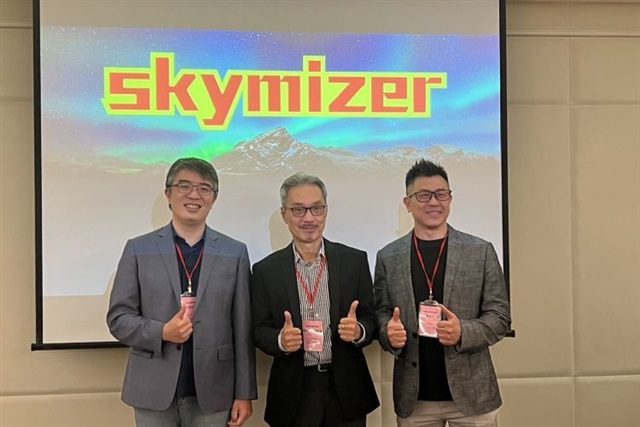- Skymizer, known for AI compilers, ventures into chip IP solutions with ET2 LPU and LLM System.
- Targeting consumer electronics, automotive, and AI PC markets with innovative pricing.
- LLM technology redefines human-machine interaction, envisioning dual-chip future for computing devices.
- Focus on edge AI with compact models tailored for specific applications.
- Anticipates market shift by 2025 towards generative AI chip products.
- Skymizer bridges gap between chip development timelines and AI tech evolution.
- Addresses cost and power consumption challenges with low-cost, low-power hardware IP.
- ET2 LPU prioritizes memory over computational power, leveraging Taiwan’s DRAM expertise.
- Competitive advantage with superior performance and TSMC’s 28nm manufacturing process.
- Customizable computational power for diverse customer applications, including budget-friendly options.
Main AI News:
In a strategic move, Skymizer, a leading AI compilers service provider, has unveiled its foray into the chip IP solutions market with the introduction of the ET2 LPU chip hardware IP and the innovative Skymizer LLM System platform.
Targeting the consumer electronics and automotive sectors initially, Skymizer’s product pricing spans from US$100 to US$500. The company is also eyeing a position within the AI PC market, adopting a distinctive approach compared to existing NPUs.
The crux of Skymizer’s strategy lies in leveraging LLM technology to redefine human-machine interaction. Luba Tang, Founder, and CEO of Skymizer, elucidated that LLM serves as a novel interface for facilitating seamless communication between humans and machines, as well as among machines themselves. Tang envisions a future where every computing device necessitates two LLM chips—one dedicated to human interaction and the other to machine interaction.
Edge AI’s trajectory towards ubiquitous deployment at the edge is not lost on Skymizer. Acknowledging this trend, the company is channeling its efforts into developing compact models tailored for specific applications. This endeavor mandates innovative technical methodologies to surmount the challenges inherent in deploying generative AI extensively at the edge.
Tang underscores the dearth of corresponding IC products in the market as a significant impediment to the widespread adoption of generative AI applications. However, he anticipates a shift by the first quarter of 2025, with an influx of generative AI chip products entering the market.
One of the critical hurdles in chip development is the discordance between development timelines and the rapid evolution of AI technology. Skymizer, adept in this domain, leverages its LLM System platform to mitigate this disparity. Furthermore, the company is tackling the cost and power consumption challenges associated with LLM deployment through the development of cost-effective, low-power hardware IP, thereby facilitating the swift introduction of LLM chip products by IC design firms.
The innovative design ethos of Skymizer is epitomized by the ET2 LPU, which adopts an LLM-centric paradigm, prioritizing memory over computational power. Tang elucidates that LLMs operate efficiently without necessitating high computational power; hence, the focus shifts to optimizing memory bandwidth, necessitating novel DRAM design architectures. The collaborative ecosystem in Taiwan, home to numerous DRAM companies specializing in unique architectures, augments Skymizer’s endeavors in this regard.
In terms of competitive advantage, the ET2 LPU outshines its counterparts with its ability to deliver superior performance with a mere 0.4 TOPs of computational power, processing 32 tokens per second. Additionally, it can be manufactured using TSMC’s 28nm process, further solidifying its edge in the market.
Ultimately, the computational power requisites are contingent upon customer applications. For instance, budget-friendly children’s toys incorporating basic generative AI dialogues can capitalize on lower-spec LPUs, which offer a cost-effective and power-efficient alternative to NPUs.
Conclusion:
Skymizer’s strategic entry into the chip IP market with its ET2 LPU and LLM System Platform signals a paradigm shift in human-machine interaction and edge AI deployment. By addressing key challenges and leveraging innovative technologies, Skymizer is poised to disrupt the market landscape, offering tailored solutions for diverse customer needs and potentially reshaping the future of computing devices.

